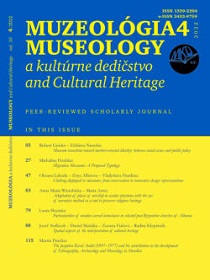Adaptation of places of worship to secular functions with the use of narrative method as a tool to preserve religious heritage
Adaptation of places of worship to secular functions with the use of narrative method as a tool to preserve religious heritage
Author(s): Anna Maria Wierzbicka, Maria ArnoSubject(s): Museology & Heritage Studies, Architecture, Culture and social structure , Sociology of Culture, Sociology of Religion
Published by: Univerzita Komenského v Bratislave, Filozofická fakulta
Keywords: adaptation; sacral buildings; semantic architecture; narrative research;
Summary/Abstract: Sacral objects are an important part of Europe’s religious heritage. For centuries, temples have constituted a key element in the urban morphology; they fit into the urban fabric of European cities and are permanently embedded there. Due to the current laicization of Europe, the adaptation of sacred buildings into secular functions has become a necessity for economic reasons. Their owners, architects, conservators and historians are faced with a dilemma: whether to preserve an object or transform it into another function? Places of worship cannot be considered in solely economic terms due to the identity of the place, its current function and its symbolism. Sacred spaces, apart from their function, structure and form, also have meaning. In holy sites, the symbol becomes a narrative tool. The purpose of a narrative in the cultural context is related to the site, the narrator, the recipient and the time of the narrative. Narrative research into semantic architecture, as one of the means of researching sacred architecture, has potential both in analysis and as a tool to facilitate design processes for the appropriate transformation of sacred buildings to serve secular functions.
Journal: Muzeológia a kultúrne dedičstvo
- Issue Year: 10/2022
- Issue No: 4
- Page Range: 63-77
- Page Count: 15
- Language: English

